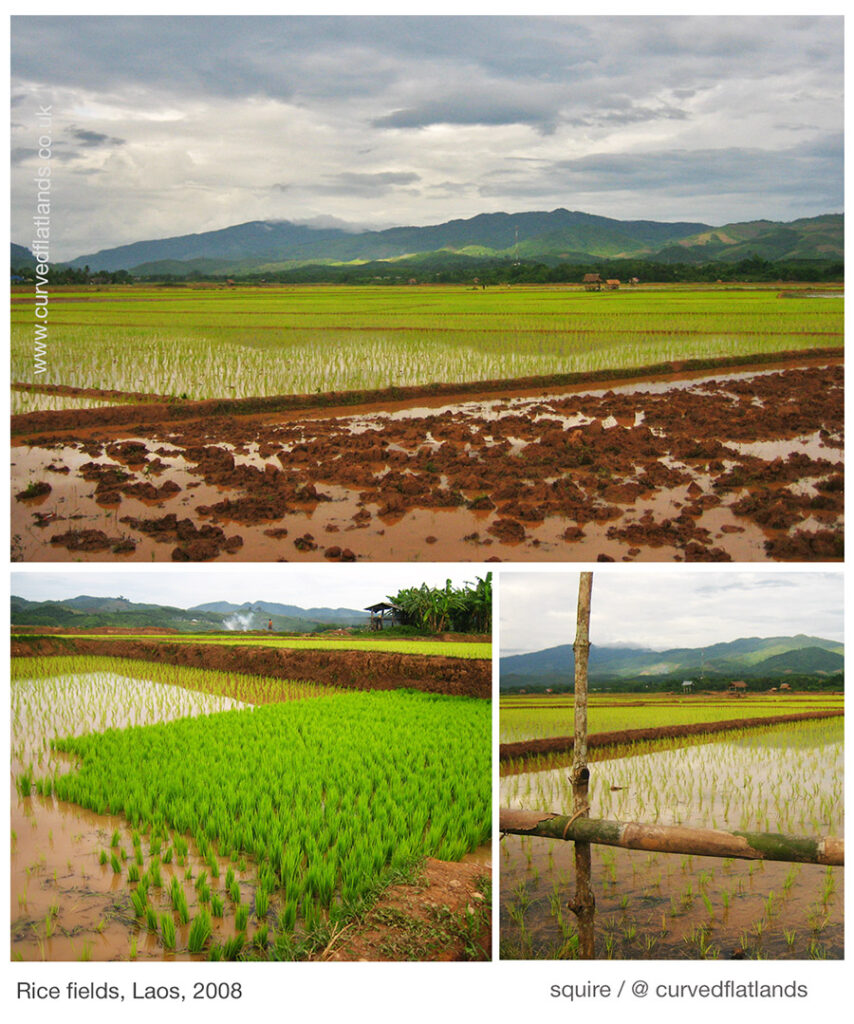Rice sculpture at Singapore Changi by artist Eng Tow. Rice the feeder of millions. Photographs of rice fields in Laos and Bangladesh. Hanging gardens and waterfall. Bringing plants to people.
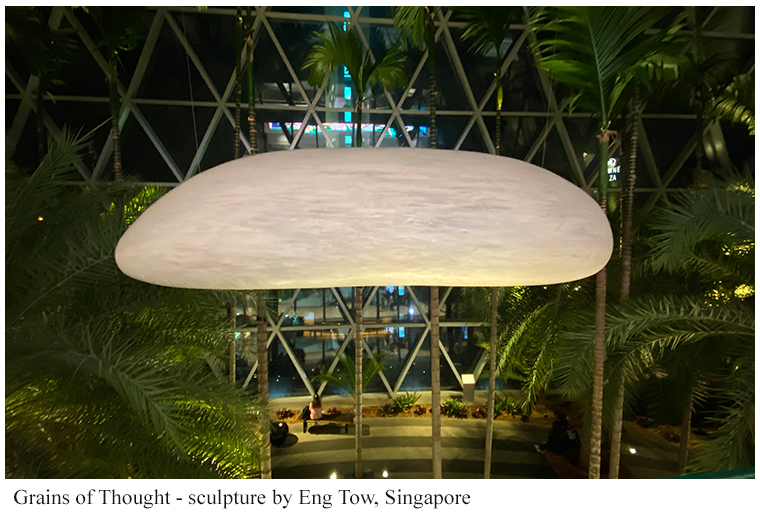
Grains of Thought (2015) is the name. Huge grains of rice, magnified from reality many times, made from acrylic and carbon fibre by the artist Eng Tow [1]. They were transferred in 2019 to the South Gateway Garden at Changi Airport from an exhibition at the Asian Civilisations Museum in Singapore [2].
These massive grains sit and hang among moist tropical vegetation inside the South Gateway precinct. All around, people were eating rice at the food stalls and restaurants.
Rice was domesticated in Asia. The climate suits it. Most rice is still grown in Asia. Over three-quarters of the global production comes from China, India, Bangladesh, Indonesia and Vietnam (Fig. 1). Rice is also grown in smaller quantities more widely, for example in the USA, south America, north Africa and southern Europe.
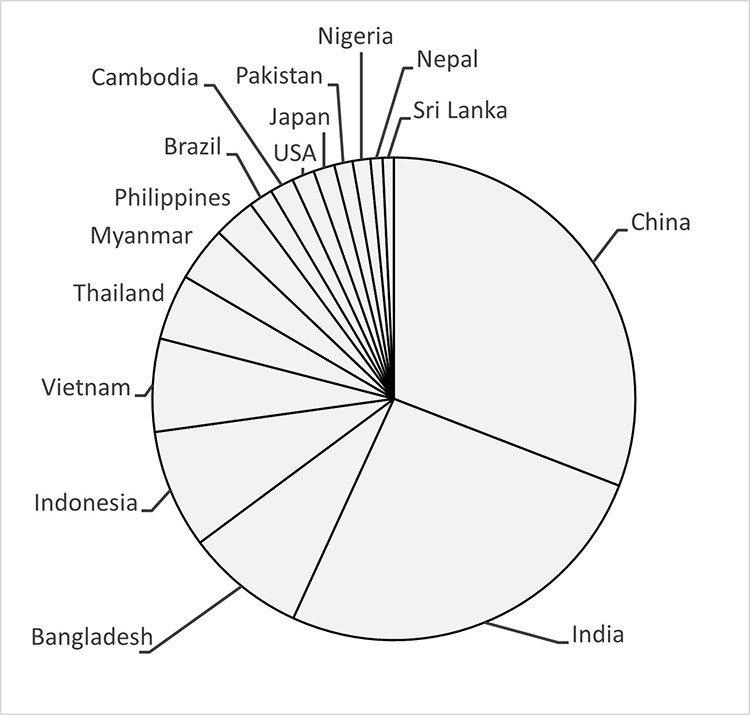
Fig. 1 Distribution of global rice production among countries, mainly in Asia: drawn from statistics of the Food and Agriculture Organisation of the United Nations.
In typical systems of cultivation in Asia, rice is grown in flat fields or terraces, surrounded by bunds made of heaped and compacted soil. The high rainfall of monsoon or wet seasons is retained within the fields or else lifted or pumped into fields from nearby waterways. The rice needs to be submerged in water but it is also better to retain the water and let it evaporate slowly, rather than have it flow downhill taking soil with it. The water is skilfully channelled between fields, sometime over extensive hillslopes and valley bottoms.
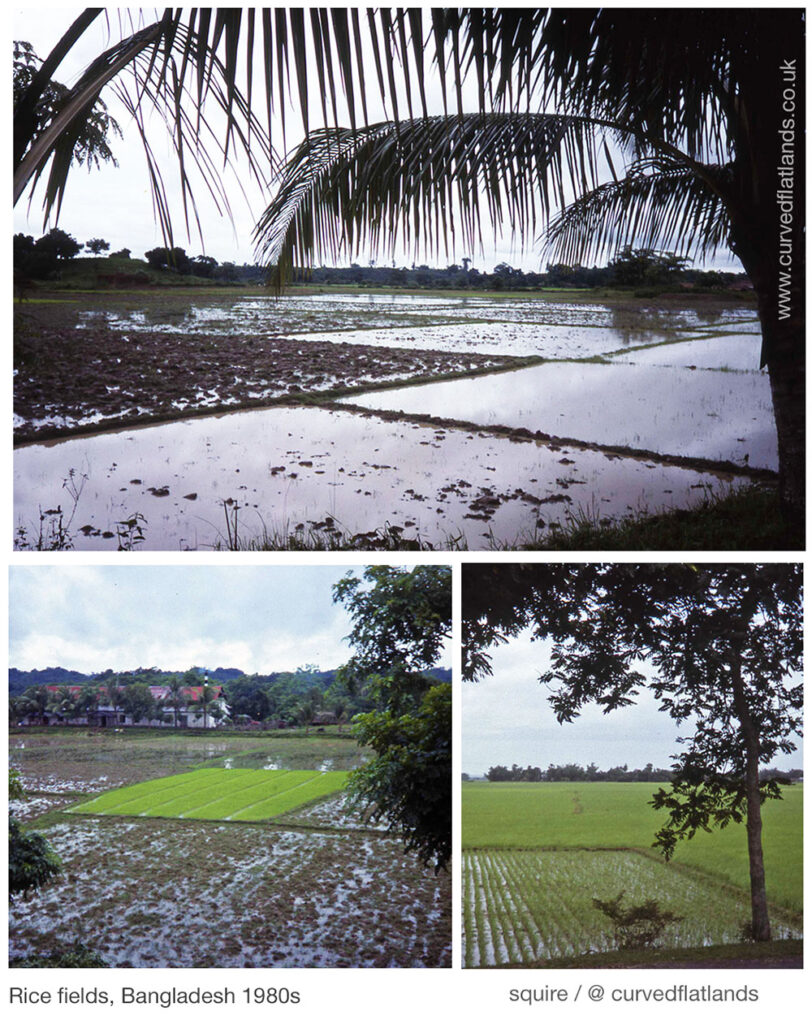
Fig 2 Rice fields in Bangladesh: upper, during soil cultivation before planting, hanging fronds are from coconut palms on a roadside; lower left, one field planted centre; lower right, all fields planted with young rice in lines.
Two examples of this ’paddy’ system are shown on this page, from Bangladesh and Laos. Once the soil has been cultivated, the rice is planted out into fields from ‘nurseries’. The lower parts of the stems are submerged for most of the plant’s life. The water has usually evaporated or else drained before harvest.
Not all rice is grown in this way: some varieties of the crop are cultivated on dry land and others in deep water where the stems extend upwards as seasonal flooding increases the distance from soil to water-surface.
Fig. 3 Rice fields in Laos: upper, foreground soil still being cultivated, young rice planted behind; lower left, ‘nursery’ from which the plants are moved to their final position in fields, the high bund in middle distance separates fields at different levels; lower right, young rice planted.
Global reach
In Scotland, the main grains since agriculture arrived here have been oats and barley, also wheat and rye. All were domesticated just to the east of the Mediterranean and were moved across Europe to reach Scotland >5000 years ago. Rice has been imported into north-west Europe for many centuries, but it was never a main source of carbohydrate … that is, not until the last 50 years or so [3]. In the 1950s, it was eaten in the home as a sweet milk pudding or added to soups and broths. Imports began to rise in the 1970s and by the 1990s its consumption had increased more than five-fold, making it one of the UK’s major sources of cereal carb [4].
The rice we eat is grown mainly in India, Pakistan, Thailand, USA and Cambodia. Various forms of the grain are now readily available in the UK for home cooking and as meals in carry-outs and restaurants. For example, basmati is the typical rice in Indian cooking while arborio is rounder and softer when cooked, ideal in risottos.
Basmati and arborio grains are shown in the photographs below as most Europeans see them – straight out of the packet. The grains have had their protective coverings removed in processing mills. Two other grains are shown with them: local oats, the protective cover still attached, and emmer wheat for which each grain was taken out of its covering by hand. The emmer and oat were grown in the Living field garden – we tried rice a few years ago. It grew leaves and stems, but did not make it to seeding.
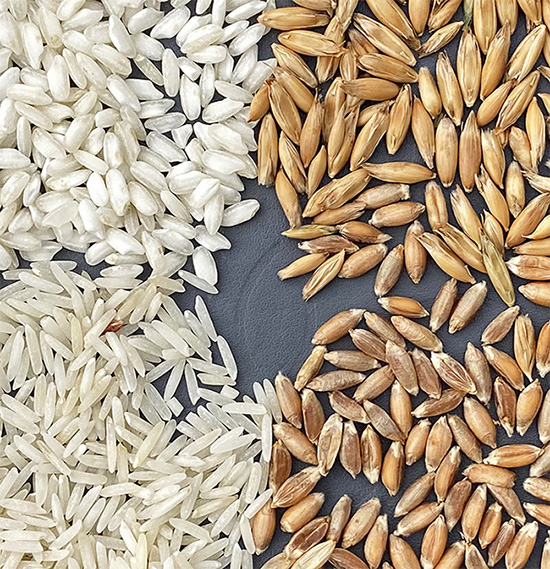
Fig. 4 Grains of arborio rice (top left), oats (upper r), emmer wheat (lower r) and basmati rice (lower l). Grains are 4-5 mm long.
The grains of these four crops differ relatively little in size (although the basmati is thinner than the others). Along with most other cereal grains they are able to survive when dried for long periods in storage. The storability of cereal grains was one of the main factors that encouraged humans to grow seasonal crops and settle in one place. The grains have an optimal geometry for growth on the plant, harvesting, storage, transportation, milling and cooking.
Grains of thought?
Most people who eat a meal of cereals – bread, porridge, pasta, paella, roti, ngaiwa – probably do not see it as once being a collection of individuals on a mother plant. Yet each grain of a cereal originates from a single act of reproduction and lives life encased in its own protective sheath. The yield of a cereal crop is determined by the number of individual grains on a cereal head or spike. The balance between number and size of individuals is influenced by field management and in turn influences the nutritional quality and economic worth of the harvest.
The grains are now unseen in most cereal products. Maybe these giant sculptures can remind us of what most people depend on for life.
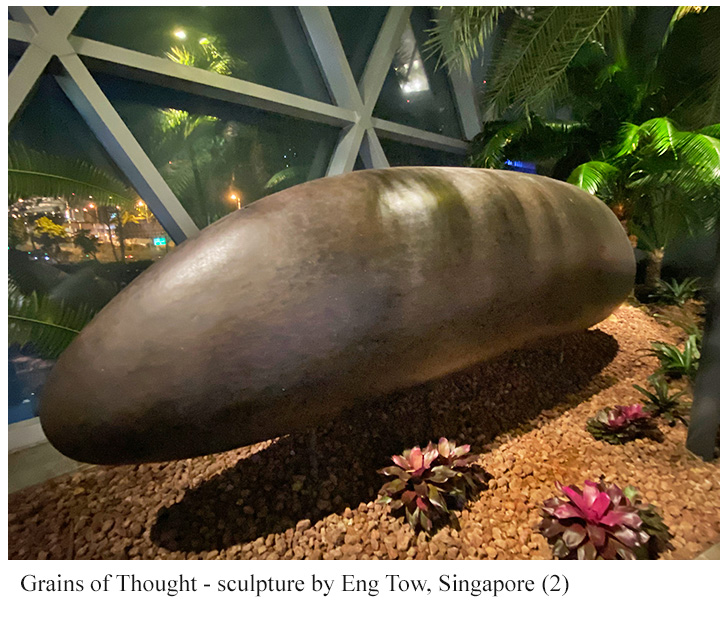
The Grains of Thought sculptures are sited within a major complex at the airport in which thousands of tropical plants are nurtured. The centrepiece is the waterfall or ‘rain vortex’, photographs below [5].
Sources | links
[1] Eng Tow: http://www.engtow-artist.com/
[2] Asian Civilisations Museum – https://www.nhb.gov.sg/acm/. For a previous article featuring ACM on the Living Field – The Tang Shipwreck and Orkney Simmens http://www.livingfield.co.uk/fibres/the-tang-shipwreck-and-orkney-simmens/
[3] Food of the Scots. Volume 5 in A Compendium of Scottish Ethnology. Author: Alexander Fenton. Publisher: John Donald, in association with The European Ethnological Research Centre.
[4] The Rice Association: Rice in the UK.
[5] Waterfall: wikipedia entry
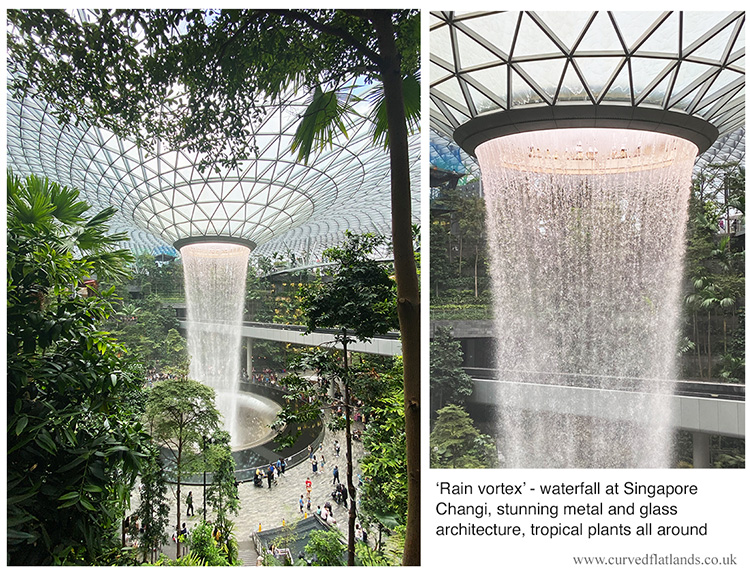
Contact: geoff.squire@hutton.ac.uk and geoff.squire@outlook.com
[Last update with some changes to text: 3-4 July 2023]

